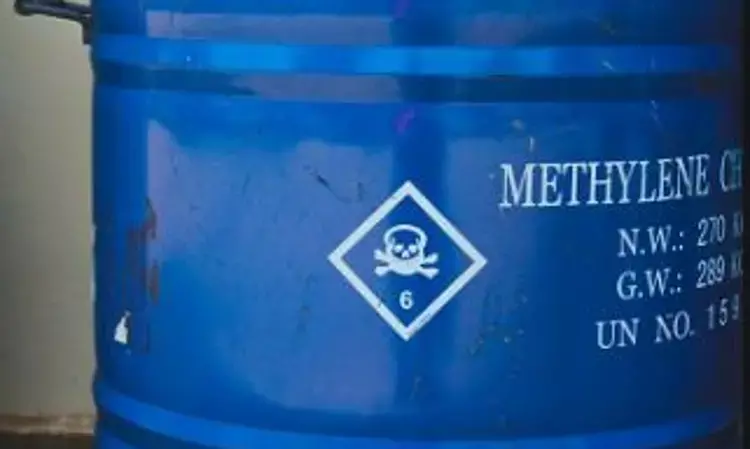- Home
- Medical news & Guidelines
- Anesthesiology
- Cardiology and CTVS
- Critical Care
- Dentistry
- Dermatology
- Diabetes and Endocrinology
- ENT
- Gastroenterology
- Medicine
- Nephrology
- Neurology
- Obstretics-Gynaecology
- Oncology
- Ophthalmology
- Orthopaedics
- Pediatrics-Neonatology
- Psychiatry
- Pulmonology
- Radiology
- Surgery
- Urology
- Laboratory Medicine
- Diet
- Nursing
- Paramedical
- Physiotherapy
- Health news
- Fact Check
- Bone Health Fact Check
- Brain Health Fact Check
- Cancer Related Fact Check
- Child Care Fact Check
- Dental and oral health fact check
- Diabetes and metabolic health fact check
- Diet and Nutrition Fact Check
- Eye and ENT Care Fact Check
- Fitness fact check
- Gut health fact check
- Heart health fact check
- Kidney health fact check
- Medical education fact check
- Men's health fact check
- Respiratory fact check
- Skin and hair care fact check
- Vaccine and Immunization fact check
- Women's health fact check
- AYUSH
- State News
- Andaman and Nicobar Islands
- Andhra Pradesh
- Arunachal Pradesh
- Assam
- Bihar
- Chandigarh
- Chattisgarh
- Dadra and Nagar Haveli
- Daman and Diu
- Delhi
- Goa
- Gujarat
- Haryana
- Himachal Pradesh
- Jammu & Kashmir
- Jharkhand
- Karnataka
- Kerala
- Ladakh
- Lakshadweep
- Madhya Pradesh
- Maharashtra
- Manipur
- Meghalaya
- Mizoram
- Nagaland
- Odisha
- Puducherry
- Punjab
- Rajasthan
- Sikkim
- Tamil Nadu
- Telangana
- Tripura
- Uttar Pradesh
- Uttrakhand
- West Bengal
- Medical Education
- Industry
Methylene chloride in paints linked to high fatality rates: JAMA

Results of a recent case series has demonstrated that despite regulations to address the toxic effects of methylene chloride use for consumers and workers, there are continuing fatalities in the US, particularly in occupational settings. The findings have been put forth in JAMA Internal Medicine.
"Prevention of fatalities associated with methylene chloride exposure should emphasize the use of safer substitutes, rather than hazard warnings or reliance on personal protective equipment."the research team opined.
Methylene chloride is a halogenated organic solvent widely used in paint strippers, cleaners, adhesives, and sealants. Despite label warnings and occupational standards, methylene chloride–related fatalities continue to occur in the United States.The most serious acute effect of methylene chloride is narcosis, ranging from light-headedness, nausea, and headache to respiratory depression and death. Methylene chloride can also sensitize the myocardium to arrhythmias, a particular risk for people with cardiovascular disease. Other acute effects include skin burns from contact, corneal damage due to ocular splashes, and indirect consequences of narcosis (eg, falls or other trauma).
The study was carried out to identify and analyze methylene chloride–related fatalities in the US. For this case series, we conducted systematic searches of sources, including PubMed and government databases, for unintentional fatalities in the US that were associated with exposure to methylene chloride or products containing methylene chloride between 1980 and 2018. Researchers reviewed all available information, including inspection reports, autopsy reports, and medical records; data analyses were conducted from August 2018 to August 2020. Cases were categorized as those occurring in the home (consumer deaths) or at work (occupational deaths).
The primary outcomw was to determine characteristics of the methylene chloride–related fatalities, we recorded demographic information; the setting; circumstances, including information on safety measures used, if available; and products used.
Results revealed some key facts.
- From 1980 to 2018, 85 methylene chloride–related fatalities were identified in the US, including 74 (87%) in occupational settings; of those who died, 75 (94%) were men, and for the 70 cases with available information, the median (interquartile range) age of the decedents was 31 (24-46) years.
- Paint strippers were the most common products involved in methylene chloride–related fatalities (n = 60).
- The proportion of occupational fatalities related to paint stripping increased from 22 (55%) before 2000 to 30 (88%) after 2000.
- Similarly, occupational fatalities associated with bathtub or paint stripping in bathrooms increased from 2 (5%) before 2000 to 21 (62%) after 2000.
- From 1985 to 2017, the American Association of Poison Control Centers documented 37 201 nonfatal methylene chloride cases, with a decrease in the annual number of cases starting in the late 1990s.
For the full article follow the link: doi:10.1001/jamainternmed.2021.1063
Primary source: JAMA Internal Medicine
Dr Satabdi Saha (BDS, MDS) is a practicing pediatric dentist with a keen interest in new medical researches and updates. She has completed her BDS from North Bengal Dental College ,Darjeeling. Then she went on to secure an ALL INDIA NEET PG rank and completed her MDS from the first dental college in the country – Dr R. Ahmed Dental College and Hospital. She is currently attached to The Marwari Relief Society Hospital as a consultant along with private practice of 2 years. She has published scientific papers in national and international journals. Her strong passion of sharing knowledge with the medical fraternity has motivated her to be a part of Medical Dialogues.
Dr Kamal Kant Kohli-MBBS, DTCD- a chest specialist with more than 30 years of practice and a flair for writing clinical articles, Dr Kamal Kant Kohli joined Medical Dialogues as a Chief Editor of Medical News. Besides writing articles, as an editor, he proofreads and verifies all the medical content published on Medical Dialogues including those coming from journals, studies,medical conferences,guidelines etc. Email: drkohli@medicaldialogues.in. Contact no. 011-43720751


